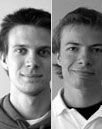Optica Creates CDF Content on the Web for Optics
Optica can be used to create interactive, dynamic Computable Document Format (CDF) content on the web of optical systems for teaching optics and sharing of optical models. The implications of this new paradigm could be revolutionary for the optics community. Since Optica can import the file formats of other popular optical design software packages, such as Zemax and Code V, the consequences of this new format could be quite far ranging. In particular, we hope to provide an online service for users of other optical modeling packages to upload their data files and immediately link to an interactive web-based model of their specific optical design. As such, new users not need purchase Optica or Mathematica to begin reaping the benefits of CDF. In this presentation, we will demonstrate how Optica can be used to generate CDF material and discuss our strategy to exploit this exciting new format.































